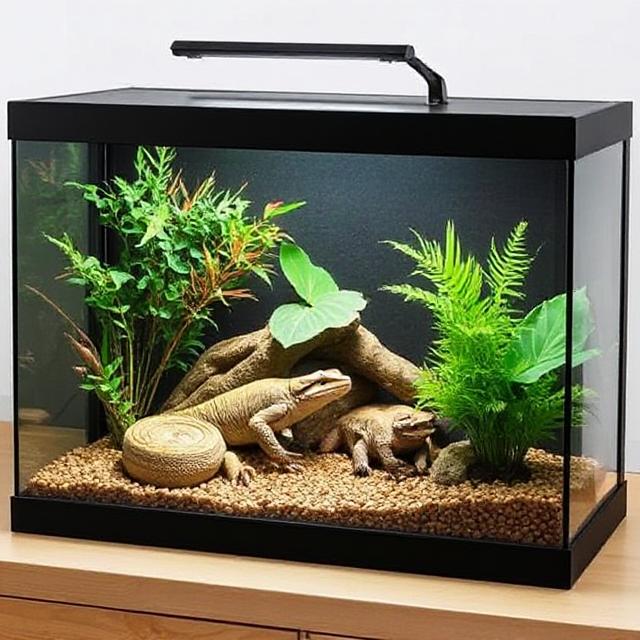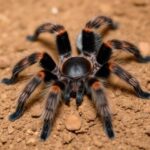Best Enclosures For Pet Reptiles
Best Enclosures for Pet Reptiles: A Complete Guide for Beginners
Best Enclosures for pet reptiles. Choosing the right enclosure is one of the most important steps in keeping reptiles as pets. Whether you own a bearded dragon, gecko, snake, or turtle, their enclosure acts as a home that supports their health, comfort, and longevity. Many first-time reptile owners underestimate the impact of proper housing, leading to stress, illness, or even early death of the pet. In this guide, we will explore the best enclosures for pet reptiles, discuss different types, essential features, and provide tips for setting up a safe, enriching habitat.
Why the Right Enclosure Matters for Reptiles
Reptiles are cold-blooded animals, meaning they rely on external sources to regulate their body temperature. A poorly designed enclosure can lead to health problems such as: Best Enclosures for pet reptiles
-
Improper Thermoregulation: Without heat zones, reptiles may struggle to maintain their body temperature.
-
Stress and Behavioral Issues: Too little space or lack of hiding areas can stress reptiles, causing them to stop eating or become aggressive.
-
Respiratory Problems: Poor ventilation can cause humidity build-up, leading to infections.
-
Nutritional and Growth Issues: Inadequate UVB lighting and incorrect temperature gradients affect metabolism and bone development.
A proper enclosure mimics the reptile’s natural habitat, helping them thrive physically and mentally.
Types of Enclosures for Pet Reptiles
There are several types of enclosures available, each with its pros and cons. The best choice depends on the species you are keeping.Best Enclosures for pet reptiles
1. Glass Terrariums
-
Best For: Geckos, chameleons, anoles, and small snakes.
-
Pros: High visibility, good for maintaining humidity, widely available.
-
Cons: Can be heavy and may retain too much heat if not ventilated properly.
Glass terrariums are popular among beginners because they are easy to clean and allow for a full view of the reptile. Best Enclosures for pet reptiles
2. PVC Enclosures
-
Best For: Ball pythons, bearded dragons, and medium to large snakes.
-
Pros: Lightweight, excellent heat retention, easy to sanitize.
-
Cons: More expensive than glass.
PVC is durable and energy-efficient, making it a great long-term investment.
3. Wooden Vivariums
-
Best For: Bearded dragons, skinks, and other terrestrial reptiles.
-
Pros: Great heat retention, customizable sizes.
-
Cons: Susceptible to moisture damage if not sealed properly.
Wooden vivariums are ideal for reptiles that require dry environments.
4. Screen Cages
-
Best For: Chameleons and arboreal reptiles.
-
Pros: Excellent ventilation, prevents overheating.
-
Cons: Poor humidity control.
Screen cages work best for species that need high airflow and low stagnant humidity. Best Enclosures for pet reptiles
5. Plastic Tubs (Rack Systems)
-
Best For: Breeding snakes and beginners with limited space.
-
Pros: Affordable, easy to maintain.
-
Cons: Limited viewing and less naturalistic.
These are commonly used by breeders and are more practical than aesthetic.
Key Features of the Best Reptile Enclosure
Best Enclosures for pet reptiles. When choosing an enclosure, consider the following essential elements:
-
Size and Space
-
Always choose the largest enclosure your space and budget allow. Reptiles need room to roam, climb, and hide.
-
A common guideline: enclosure length should be at least 1.5 times the length of the reptile.
-
-
Ventilation
-
Proper airflow prevents mold and maintains ideal humidity levels.
-
Enclosures should have screen tops or side vents.
-
-
Temperature Gradient
-
Reptiles need both warm and cool areas for thermoregulation.
-
Install heat lamps, under-tank heaters, or ceramic heat emitters.
-
-
Lighting (UVB)
-
Essential for reptiles like turtles, iguanas, and bearded dragons to synthesize vitamin D3.
-
Replace UVB bulbs every 6–12 months.
-
-
Substrate
-
Choose species-specific bedding (e.g., coconut fiber for geckos, sand for desert reptiles, newspaper for snakes).
-
-
Security and Safety
-
Enclosures should have secure locks to prevent escapes.
-
Avoid sharp edges and toxic materials.
-
-
Ease of Cleaning
-
Removable trays, waterproof interiors, and simple access points make cleaning hassle-free.
-
Best Enclosures for Popular Pet Reptiles
Best Enclosures for pet reptiles. Here’s a quick guide to help you match enclosures with specific reptiles:
-
Bearded Dragons: 40–120 gallon glass or wooden vivarium with heat lamps.
-
Leopard Geckos: 20–40 gallon glass terrarium with hides and heating pad.
-
Ball Pythons: 40–75 gallon PVC or tub with proper humidity control.
-
Crested Geckos: Vertical terrarium with climbing branches and moderate humidity.
-
Turtles & Tortoises: Large tanks or outdoor pens with UVB lighting.
How to Set Up Your Reptile Enclosure
-
Select the Right Enclosure Type and Size
-
Always buy an enclosure that suits the adult size of your reptile.
-
-
Add Heating and Lighting
-
Create a basking zone and a cooler retreat area.
-
-
Set the Substrate
-
Choose reptile-safe bedding depending on whether your pet is terrestrial, arboreal, or aquatic.
-
-
Include Hides and Climbing Structures
-
Reptiles need places to hide to feel secure.
-
-
Install Water Dish and Humidity Control
-
Some species need misting systems or water features.
-
-
Test Before Introducing Your Pet
-
Run the enclosure for 24 hours to stabilize temperature and humidity.
-
Common Mistakes Beginners Make
-
Choosing a Small Tank: Many underestimate the final size of their pet.
-
Ignoring Humidity Needs: Improper humidity can cause shedding problems and infections.
-
Using Unsafe Substrates: Sand, pine shavings, or gravel may cause impaction or injuries.
-
Skipping UVB Lights: Leads to metabolic bone disease in many reptiles.
Final Thoughts
The best enclosures for pet reptiles are those that mimic their natural habitat, provide safety, and are easy to maintain. Glass terrariums, PVC enclosures, and wooden vivariums are all excellent choices depending on your reptile species and home environment. Always research your reptile’s specific needs before making a purchase, as a well-designed enclosure can make the difference between a stressed pet and a thriving one. Best Enclosures for pet reptiles
By investing in the right housing, you ensure your reptile not only survives—but truly thrives—in your care.


